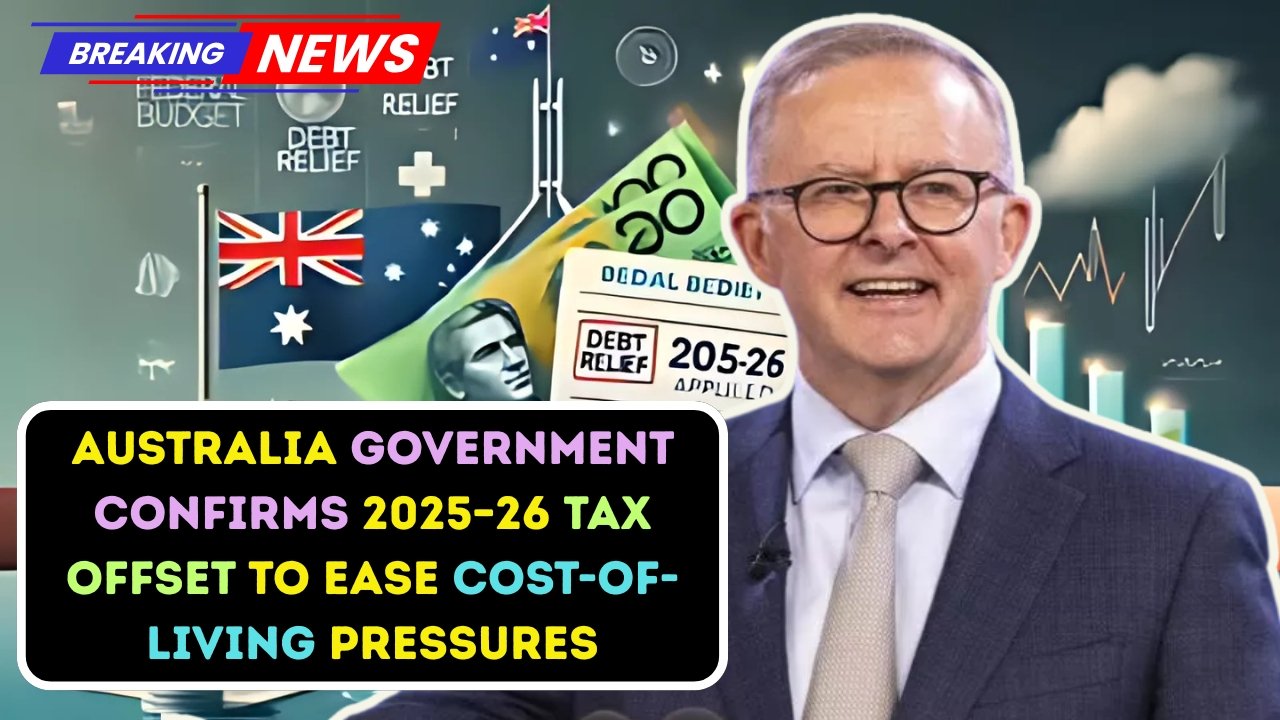If you’ve been feeling the pinch of rising prices lately, you’re definitely not alone. From groceries to petrol, electricity to housing, Australians everywhere are tightening their belts. Well, here’s a bit of relief on the horizon—the federal government has officially confirmed a new tax offset for 2025–26, aimed at easing cost-of-living pressures for everyday households.
Now, before you sigh and say, “Oh, another policy I won’t understand,” let me break it down. This is not just political jargon—it’s a real adjustment that could leave more money in your pocket at tax time. And in a year when nearly everything feels more expensive, even small savings can go a long way.
What Is This Tax Offset About?
In simple terms, the government has announced that starting from the 2025–26 financial year, eligible taxpayers will receive a new tax offset. This offset is designed to lighten the income tax burden, particularly for middle- and low-income earners who are most impacted by inflation and rising living costs.
The idea is fairly straightforward: when you lodge your tax return, instead of paying as much as you normally would, the offset reduces your tax liability. Some people might even get a larger refund, depending on their earnings and circumstances.
Honestly, it’s not a miracle cure for cost-of-living pain, but it’s certainly a welcome cushion.
Why Now?
To be fair, this move didn’t come out of the blue. Australians have been raising concerns about the relentless rise in household bills. Add to that the pressures of global economic uncertainty, stubbornly high rent, and the ongoing challenge of balancing wages against inflation—it’s a perfect storm.
The government, already under pressure to do something tangible, finally responded with this policy. Officials have framed the offset as a “cost-of-living relief measure”, rather than just a tax tweak. In other words, it’s meant to show that Canberra is listening.
Who Will Benefit?
Here’s where it gets interesting. Unlike some past tax cuts that mainly favoured higher earners, this offset is expected to target low- and middle-income households. That means if you’re in the average income bracket, chances are you’ll see a positive change.
High-income earners might get less benefit from this adjustment, since the scheme is designed to direct relief to those who need it most. Honestly, that’s fair, because the everyday worker is the one struggling most with the weekly shop or electricity bill.
How Much Could You Save?
The exact savings will depend on your income level. While the government hasn’t yet laid out every tiny detail (those will come closer to implementation), early indications suggest a few hundred dollars in relief annually for many workers.
That might not sound like a jackpot, but think about it: a few hundred dollars could mean covering a few weeks of groceries, offsetting fuel costs for your commute, or even helping with school expenses for the kids. On the flip side, it won’t solve everything—your rent won’t magically drop, and your bills won’t vanish—but it’s something.
A Quick Comparison
Here’s a simple look at how the new tax offset compares with recent cost-of-living pressures:
| Category | Average Increase in 2024–25 | Relief Expected from Offset 2025–26 |
|---|---|---|
| Grocery bills | +6–8% annually | $200–$400 per year (est.) |
| Petrol/Fuel | +5–7% annually | $200–$300 per year (est.) |
| Electricity bills | +10% in some states | Offset can partially balance |
| Rent | +8–12% nationally | Indirect relief only |
As you can see, the offset isn’t about fully neutralising costs—it’s about softening the blow.
The Bigger Picture
Some critics argue this is just a short-term band-aid. They say structural reforms, like more affordable housing or energy pricing reform, would have a greater long-term effect. That’s true to an extent. But let’s be real: when you’re staring at your electricity bill, you’re not thinking about 2030 energy targets—you just want a little financial breathing space now.
And that’s exactly what this offset promises.
So, what does all this mean for you? Well, if you’re a working Australian earning within the low- to middle-income range, you’re very likely to see a difference in your take-home finances come tax time 2025–26. It won’t completely solve the cost-of-living crisis—nothing ever does in one stroke—but it’s certainly a step in the right direction.
At the end of the day, the offset is about giving you back a slice of control. And when money is tight, even a slice feels like a feast.
FAQs
1. What is the new tax offset announced for 2025–26?
It’s a government measure to reduce the tax burden on low- and middle-income Australians, helping ease cost-of-living pressures.
2. Who qualifies for the tax offset?
Most low- to middle-income earners will be eligible, though specific income thresholds will be confirmed closer to rollout.
3. How much money can I actually save?
Estimates suggest a few hundred dollars per year, depending on your income.
4. Is this offset permanent?
For now, it’s confirmed for the 2025–26 financial year, with future reviews possible.
5. Will it affect my tax refund?
Yes, in a positive way—you may owe less tax or receive a slightly larger refund when lodging your return.

